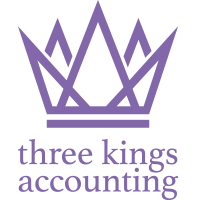National insurance contributions (NICs) are essentially a tax on earned income. The NICs regime divides income into different classes: Class 1 contributions are payable on earnings from employment, while the profits of the self-employed are liable to Class 2 and 4 contributions.
National insurance is often overlooked yet it is the largest source of government revenue after income tax.
We highlight below the areas you need to consider and identify some of the potential problems. Please contact us for further specific advice.
Health and Social Care Levy
From April 2022, the Government will introduce a new, UK-wide 1.25% Health and Social Care Levy, ringfenced for health and social care. This will be based on National Insurance Contributions (NIC) and from 2023 will be legislatively separate. It appears that in 2022/23
- there will be a 1.25% increase in Class 1 (employee and employer) and Class 4 (self-employed) NIC for the main and higher rates; and
- there will be a 1.25% increase in dividend tax rates.
The Levy will be effectively introduced from April 2022, when NIC for working age employees, self-employed and employers will increase by 1.25% and be added to the existing NHS allocation. The Levy will not apply to Class 2 or 3 NIC.
From April 2023, once HMRC’s systems are updated, the 1.25% Levy will be formally separated out and will also apply to individuals working above State Pension age and NIC rates will return to their 2021/22 levels.
Scope of NICs
Employees
Employees are liable to pay Class 1 NICs on their earnings. In addition, a further secondary contribution is due from the employer.
For 2022/23 employee contributions are only due when earnings exceed a ‘primary threshold’ of £190 per week (£184 per week for 2021/22). The amount payable is 13.25% of the earnings above £190 up to earnings of £967 a week, the Upper Earnings Limit (UEL). (UEL was £967 for 2021/22). In addition, there is a further 3.25% charge on weekly earnings above the UEL. Secondary contributions are due from the employer of 15.05% of earnings above the ‘secondary threshold’ of £175 per week (£170 per week in 2021/22). There is no upper limit on the employer’s payments.
Employer NICs for the under 21s
From 2022/23 the rate of employer NICs for those under the age of 21 is reduced from 15.05% to 0%. For the 0% rate to apply the employee will need to be under 21 when the earnings are paid.
This exemption will not apply to earnings above the Upper Secondary Threshold (UST) in a pay period. The UST is set at the same amount as the UEL, which is the amount at which employees’ NICs fall from 13.25% to 3.25%. The weekly UST is £967 for 2022/23 (£967 for 2021/22). Employers will be liable to 15.05% (13.8% for 2021/22) NICs beyond this limit. The employee will still be liable to pay employee NICs.
NICs for apprentices under 25
Employer NICs are also reduced to 0% for apprentices under 25 who earn less than the UST which is £967 per week and £50,270 per annum for 2022/23 (£967 per week and £50,270 per annum for 2021/22). Employers are liable to 15.05% (13.8% for 2021/22) NICs on pay above the UST. Employee NICs are payable as normal.
An apprentice needs to:
- be working towards a government recognised apprenticeship in the UK which follows a government approved framework/standard
- have a written agreement, giving the government recognised apprentice framework or standard, with a start and expected completion date.
Employers need to identify relevant apprentices and generally assign them NICs category letter H to ensure the correct NICs are collected.
Employers need to ensure they amend the contributions letter when the apprenticeship ends or the employee turns 25.
NICs for Veterans
Civilian employers of veterans are to be given relief from employer NICs up to the level of the UST (currently £967 per week) for the first year of civilian employment. Under the rules:
- from 6 April 2022, the relief is available through the PAYE
- a qualifying veteran will have been a member of the Regular Armed Forces and have completed at least one day of basic training
- it will not matter when the veteran left the armed forces.
This measure applies from 6 April 2021 until 5 April 2024.
Benefits in kind
Employers providing benefits such as company cars for employees have a further NICs liability under Class 1A. Contributions are payable on the amount charged to income tax as a taxable benefit.
Most benefits are subject to employer’s NICs. The current rate of Class 1A is the same as the employer’s secondary contribution rate of 15.05% (13.8% for 2021/22) for benefits provided.
The self-employed
NICs are due from the self-employed as follows:
- flat rate contribution (Class 2)
- variable amount based on the taxable profits of the business (Class 4).
The liability to pay Class 2 NICs arises at the end of each year, and is generally collected as part of the final self assessment payment.
The amount of Class 2 NICs due is calculated based on the number of weeks of self-employment in the year and calculated at a rate of £3.05 per week for 2022/23 (£3.05 per week for 2021/22).
Self-employed individuals with profits below the Small Profits Threshold of £6,725 for 2022/23 (£6,515 for 2021/221) are not liable to Class 2 NICs but have the option to pay Class 2 NICs voluntarily at the end of the year so that they may protect their benefit rights.
Class 4
For 2022/23 Class 4 is payable at 10.25% on profits between £9,880 and £50,270 (between £9,568 and £50,270 for 2021/22). In addition, there is a further 3.25% (2% for 2021/22) on profits above £50,270 (£50,270 for 2021/22).
Class 3 voluntary contributions
Flat rate voluntary contributions are payable under Class 3 of £15.85 per week for 2022/23 (£15.40 per week for 2021/22). They give an entitlement to basic retirement pension and may be paid by someone not liable for other contributions in order to maintain a full NICs record.
Class 3 contributions, which can be paid voluntarily to protect entitlement to the State Pension and Bereavement Benefit, also give entitlement to the standard rate of Maternity Allowance and contributory Employment and Support Allowance for the self-employed.
National Insurance – Employment Allowance
The Employment Allowance is available to many employers and can be offset against their employer Class 1 NICs liability. The amount of the Employment Allowance is currently £4,000.
Companies, where the director is the sole employee earning above the secondary threshold, are unable to claim the Employment Allowance.
From 6 April 2020 the Employment Allowance is restricted to those employers whose employers’ NIC bill is below £100,000 in the previous tax year.
The Employment Allowance will operate as de minimis State aid. This means it will count towards the total aid a business is entitled to under the relevant de minimis State aid cap.
There are other exceptions for employer Class 1 liabilities including liabilities arising from:
- a person who is employed (wholly or partly) for purposes connected with the employer’s personal, family or household affairs. However, the allowance may be available for those employing care and support workers. Please contact us if this may be relevant to you as there are specific conditions which must be satisfied
- the carrying out of functions either wholly or mainly of a public nature (unless charitable status applies), for example, NHS services and General Practitioner services
- employer contributions deemed to arise under IR35 for personal service companies.
There are also rules to limit the employment allowance to a total of £4,000 where there are ‘connected’ employers. For example, two companies are connected with each other if one company controls the other company.
The allowance is limited to the employer Class 1 NICs liability if that is less than the Employment Allowance.
The allowance is claimed as part of the normal payroll process. The employer’s payment of PAYE and NICs is reduced each month to the extent it includes an employer Class 1 NICs liability until the Employment Allowance limit has been reached.
Potential problems
Time of payment of contributions
Class 1 contributions are payable at the same time as PAYE ie monthly. Class 1A contributions are not due until 19 July (22nd for cleared electronic payment) after the tax year in which the benefits were provided.
It is therefore important to distinguish between earnings and benefits.
Earnings
Class 1 earnings will not always be the same as those for income tax. Earnings for NI purposes include:
- salaries and wages
- bonuses, commissions and fees
- holiday pay
- certain termination payments.
Problems may be encountered in relation to the treatment of:
- expense payments
- benefits.
Expense payments will generally be outside the scope of NI where they are specific payments in relation to identifiable business expenses. However NI is payable on round sum allowances.
In general benefits are not liable to Class 1 NICs. There are however some important exceptions including:
- most vouchers
- stocks and shares
- other assets which can be readily converted into cash
- the payment of an employee’s liability by an employer.
Directors
Directors are employees and must pay Class 1 NICs. However directorships can give rise to specific NICs problems. For example:
- directors may have more than one directorship
- fees and bonuses are subject to NICs when they are voted or paid whichever is the earlier
- directors’ loan accounts where overdrawn can give rise to a NICs liability.
We can advise on the position in any specific circumstances.
Employed or self-employed
The NICs liability for an employee is higher than for a self-employed individual with profits of an equivalent amount. Hence there is an incentive to claim to be self-employed rather than employed.
Are you employed or self-employed? How can you tell? In practice, it can be a complex area and there may be some situations where the answer is not clear.
In general terms the existence of the following factors would tend to suggest employment rather than self-employment:
- the ’employer’ is obliged to offer work and the ’employee’ is obliged to accept it
- a ‘master/servant’ relationship exists
- the job performed is an integral part of the business
- there is no financial risk for the ’employee’.
It is important to seek professional advice at an early stage and in any case prior to obtaining a written ruling from HMRC.
If HMRC discovers that someone has been wrongly treated as self-employed, they will re-categorise them as employed and are likely to seek to recover arrears of contributions from the employer.
Enforcement
HMRC carry out compliance visits in an attempt to identify and collect arrears of NICs. They may ask to see the records supporting any payments made.
HMRC have the power to collect any additional NICs that may be due for both current and prior years. Any arrears may be subject to interest and penalties.
Please contact us for advice on NICs compliance and ways to minimise the effect of an HMRC visit.
How we can help
Whether you are an employer or employee, employed or self-employed, awareness of NICs matters is vital.
HMRC have wide enforcement powers and anti-avoidance legislation available to them. Consequently, it is important to ensure that professional advice is sought so that all compliance matters are properly dealt with.
We would be delighted to advise on any compliance matters relevant to your own circumstances so please contact us.


